Author: Andy Carter
I tend to brew in the morning, as it gives me ample time to get the job done, and I almost always have a cup of coffee in my hand when I get started. From the perfectly mediocre Folgers I drank in middle-school to the contemporary small batch third wave products of today, coffee has been a part of my life for quite some time, so it should come as no surprise that I’m also a fan of beers that possess similarly roasty flavors.
Since the early 19th century, following the invention of the drum roaster, brewers have relied on grains such as roasted barley and black malt to impart roast character to beers like Stout and Porter, the characteristics of which are described in terms that closely resemble coffee. Considering both go through a similar roasting process, the comparison makes sense, though there’s no denying each has its own unique flavors and aromas, for example, coffee often possesses fruity notes. Over the last couple decades, many brewers have been using actual coffee to craft unique beers, lending complimentary flavors to styles ranging from Blonde Ale to Imperial Stout.
As someone who enjoys coffee beers, I’ve tried my hand at brewing a few, typically adding whole beans to the fermented beer and letting it sit for a few days. However, others prefer adding brewed coffee post-fermentation, which raises the issue of what brewing method to use. Opinions abound as to whether hot or cold brew coffee imparts more desirable flavors, and while tasters in a prior xBmt couldn’t tell apart beers made with either, I was curious to see for myself and tested it out again.
| PURPOSE |
To evaluate the differences between a Stout made with hot brewed coffee and one made with cold brewed coffee.
| METHODS |
The recipe for this xBmt was one I’ve brewed a few times in the past and really enjoy.
Wakeup Call
Recipe Details
| Batch Size | Boil Time | IBU | SRM | Est. OG | Est. FG | ABV |
|---|---|---|---|---|---|---|
| 5.8 gal | 60 min | 26.1 IBUs | 33.9 SRM | 1.060 | 1.015 | 6.0 % |
| Actuals | 1.06 | 1.008 | 6.9 % | |||
Fermentables
| Name | Amount | % |
|---|---|---|
| Pale Malt (2 Row) US | 6 lbs | 48.98 |
| Pilsner (2 Row) Ger | 5 lbs | 40.82 |
| Roasted Barley | 1.25 lbs | 10.2 |
Hops
| Name | Amount | Time | Use | Form | Alpha % |
|---|---|---|---|---|---|
| Cashmere | 28 g | 60 min | Boil | Pellet | 7.9 |
| Hallertauer Mittelfrueh | 14 g | 30 min | Boil | Pellet | 3.8 |
| Hallertauer Mittelfrueh | 14 g | 10 min | Boil | Pellet | 3.8 |
Notes
| Water Profile: Ca 67 | Mg 5 | Na 0 | SO4 65 | Cl 42 |
Download
| Download this recipe's BeerXML file |
I started my brew day by adding identical volumes of RO water to separate BrewZilla units, adjusting each to my desired mineral profile, then setting the controller to heat it up.
While waiting on the water to warm, I weighed out and milled two identical sets of the grain.
Once the water for each batch was properly heated, I incorporated the grains then checked to make sure they hit my target mash temperature.
While the mashes were resting, I prepared the kettle hop additions.
Once each 60 minute mash was complete, I removed the grains and sparged to collect the same pre-boil volume.
The worts were boiled for 60 minutes before being chilled and transferred to separate 6 gallon/23 liter PET carboys. Refractometer readings taken at this time showed both were at the same OG.
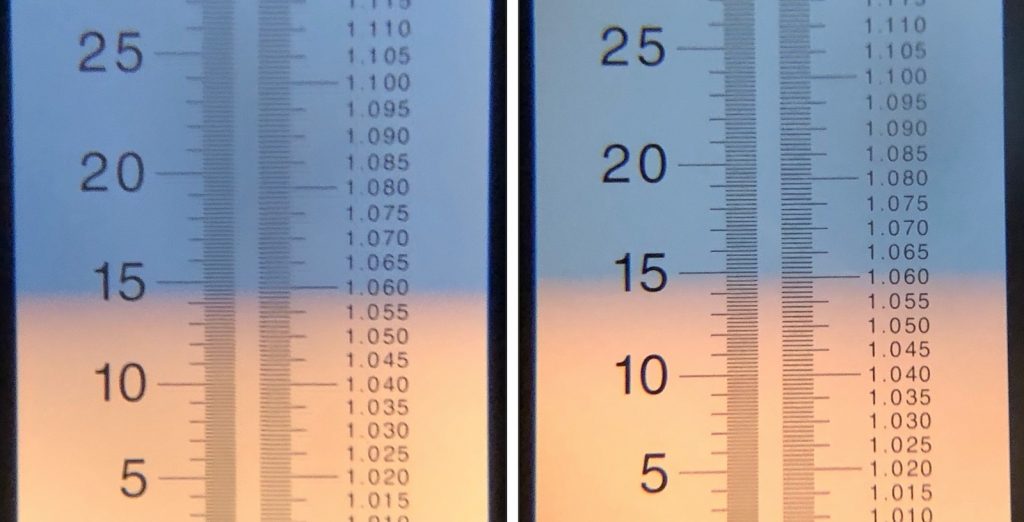
I placed the filled fermenters were placed in my chamber and allowed to finish chilling to my desired fermentation temperature of 66°F/19°C for a few hours before I returned to pitch a single pouch of Imperial Yeast A09 Pub into each.
With both batches appearing to be done fermenting 12 days later, I took hydrometer measurements showing both were at the same FG.

At this point, I prepared the cold brew coffee by adding 6 oz/170 g of fresh grounds to 30 oz/887 mL of cool water then placing it in my fridge.
Approximately 20 hours later, I used the same amount of water and grounds to make a similar volume of hot pour-over coffee.
Prior to adding the coffee to the beers, I pressure transferred them to sanitized kegs.
Next, I carefully removed the lids on each keg and poured 19 oz/562 mL of the hot brewed coffee into one while the other received the same volume of cold brew coffee. With the lids replaced, the filled kegs were put in my keezer and left on gas for 3 weeks before I began evaluating them.
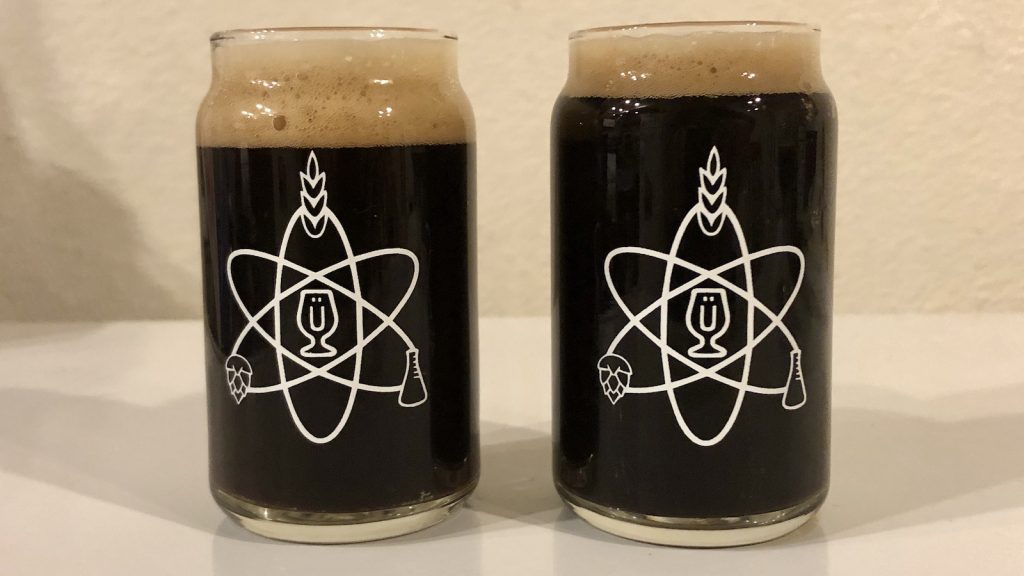
| RESULTS |
Due to social distancing practices as a result of the COVID-19 pandemic, data for this xBmt was unable to be collected in our typical manner. As such, temporary adaptations were made involving the author completing multiple semi-blind triangle tests in as unbiased a way as possible.
Utilizing 4 opaque cups of the same color where 2 were inconspicuously marked, one set was filled with the beer made with hot brewed coffee while the other set was filled with the beer made with cold brew coffee. For each triangle test, 3 of the 4 cups were indiscriminately selected, thus randomizing which beer was the unique sample for each trial. Following each attempt, I noted whether I was correct in identifying the unique sample. Out of the 10 semi-blind triangle tests I completed, I needed to identify the unique sample at least 7 times (p<0.05) in order to reach statistical significance, though I did so just 2 times (p=0.896), indicating my inability to reliably distinguish a Stout made with hot brewed coffee from one made with cold brew coffee.
Based on my experience drinking coffee brewed in different ways, I was confident I’d be able to tell these beers apart, but that just wasn’t the case, they tasted identical to me. Prior to adding the coffee to the beers, they tasted okay, but I felt the coffee livened them up considerably, contributing deeper cocoa and cinnamon notes along with a slight bitterness.
| DISCUSSION |
Of all the adjuncts used in the brewing process, coffee is one that makes a lot of sense because it’s roasted in the same way dark grains are and contributes similar characteristics, playing well in many styles. When it comes to coffee brewing methods, it’s widely accepted that steeping grounds in cool water over time leads to lower acidity and bitterness compared to methods that involve the use of hot water. While many brewers claim this difference can be perceived in beers made with coffee, my inability to reliably distinguish a Stout made with hot brewed coffee from one made with cold brew coffee suggests otherwise.
One possible explanation for these findings is that the dark roast coffee used in this xBmt was so unidimensional that any differences were so minimal as to be imperceptible. However, it seems equally if not more likely a function of the amount of coffee added to the beer, which while enough to contribute noticeable flavor, may not be enough to display the subtleties of each method.
As much as I enjoyed these xBmt beers, I have no plans to change my current process of adding whole coffee beans directly to the primary when fermentation is complete. The coffee flavor in these beers was excellent and, given the results, it seems both hot and cold brewing methods work just fine. I do look forward to one day comparing a beer made using my “dry beaning” method to one made with either hot or cold brewed coffee.
If you have any thoughts about this xBmt, please do not hesitate to share in the comments section below!
Support Brülosophy In Style!
All designs are available in various colors and sizes on Amazon!
Follow Brülosophy on:
FACEBOOK | TWITTER | INSTAGRAM
If you enjoy this stuff and feel compelled to support Brulosophy.com, please check out the Support page for details on how you can very easily do so. Thanks!


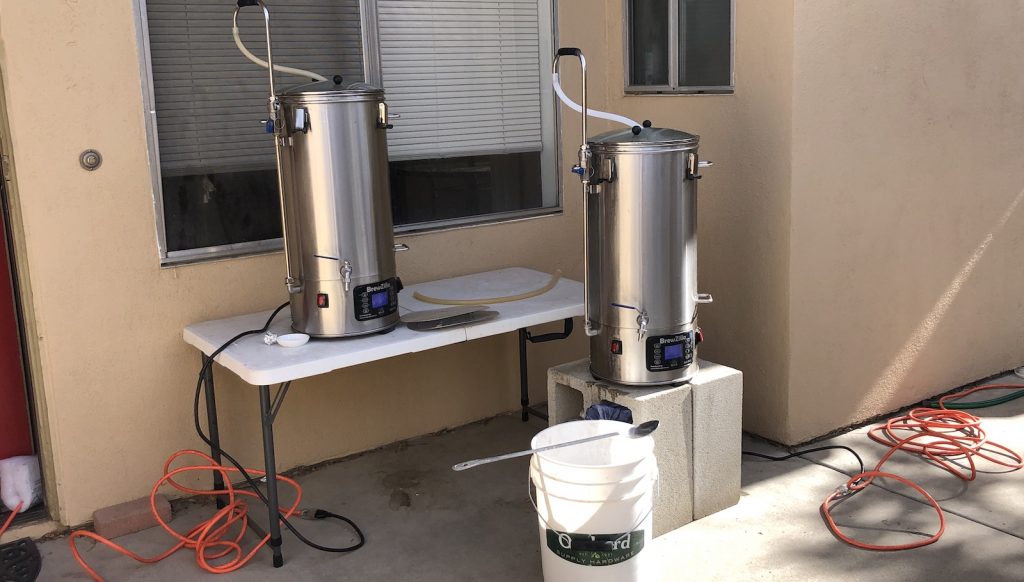
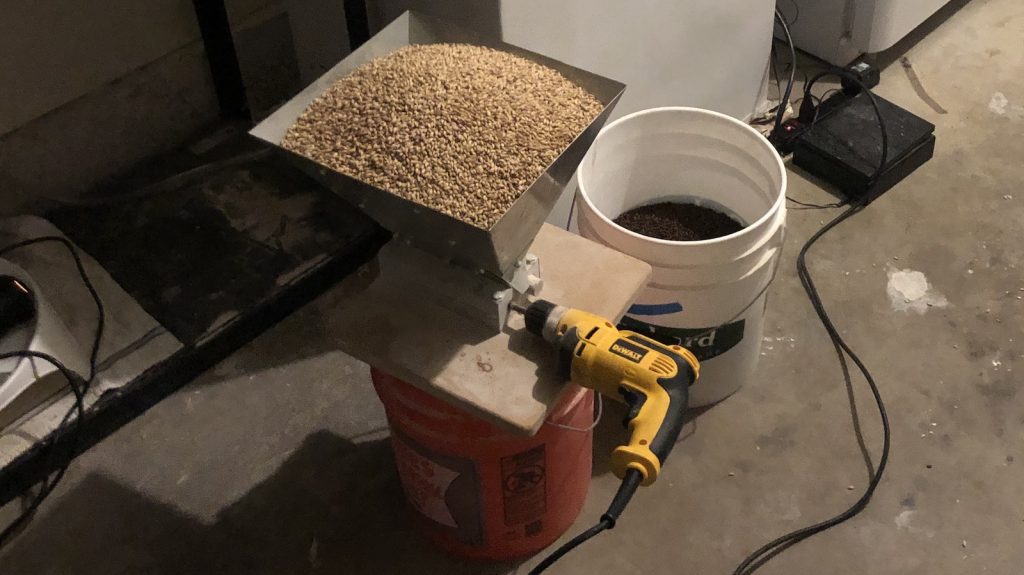
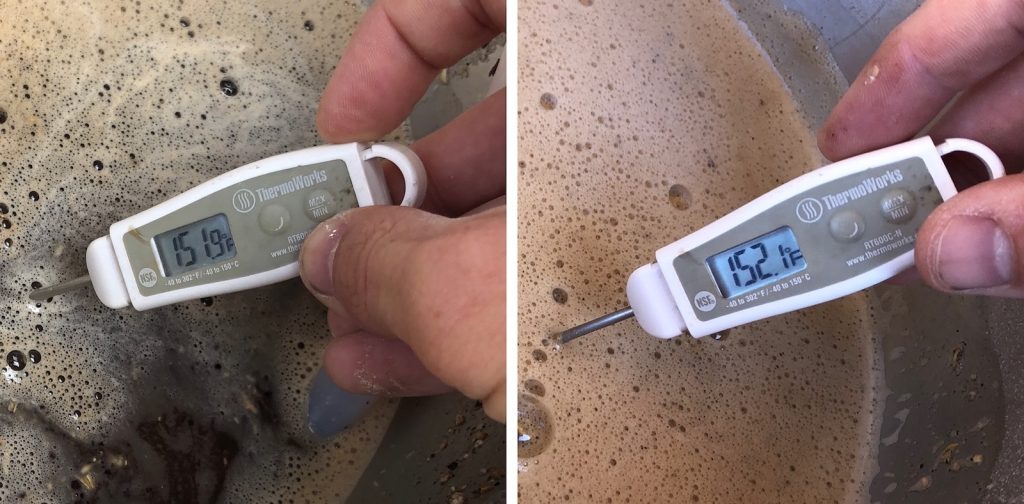
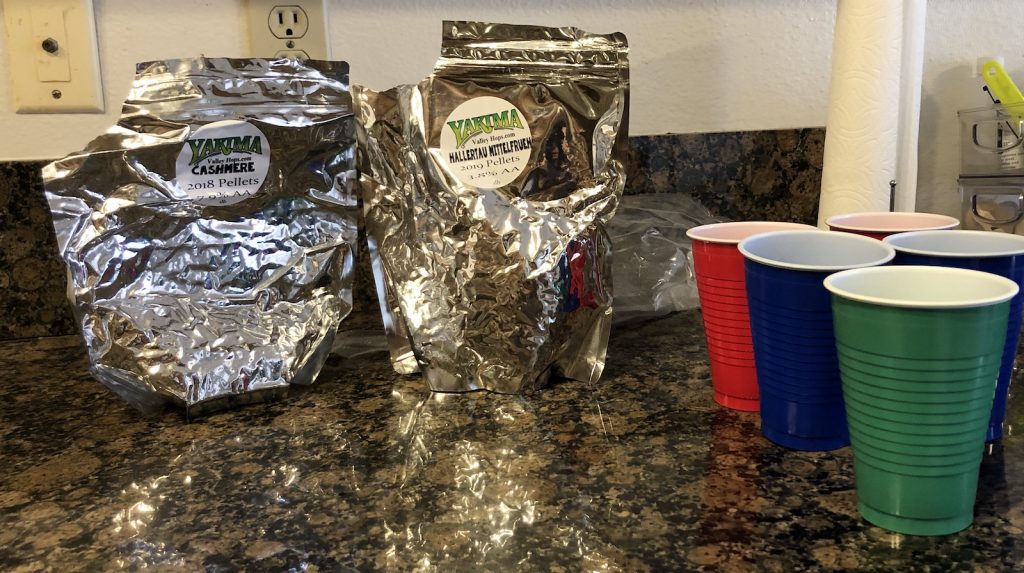
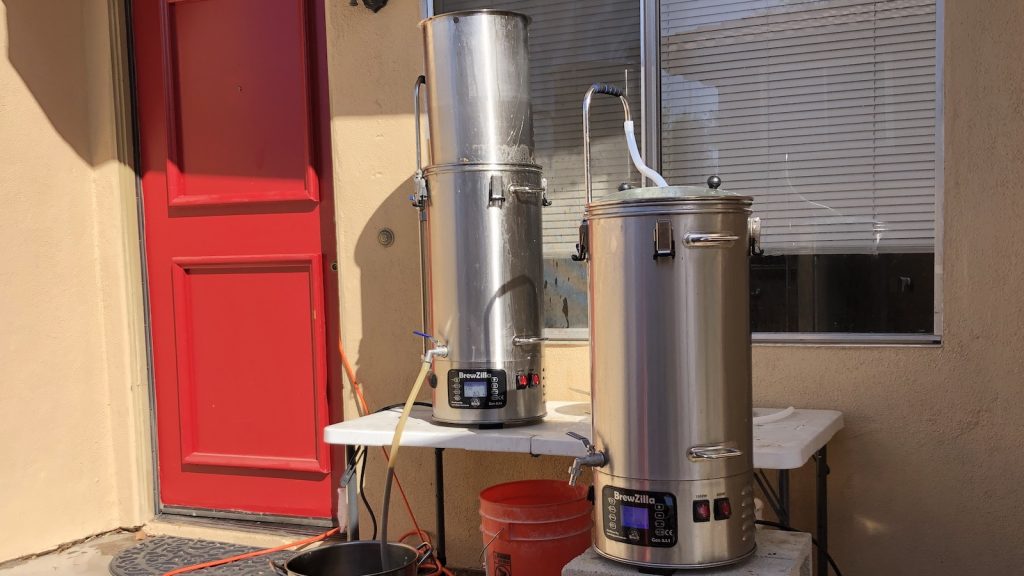
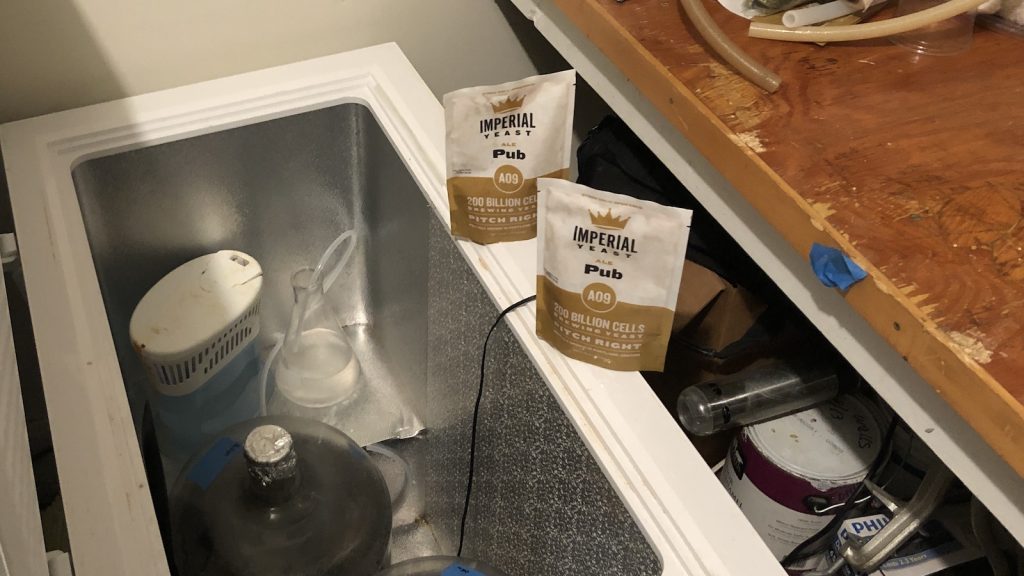
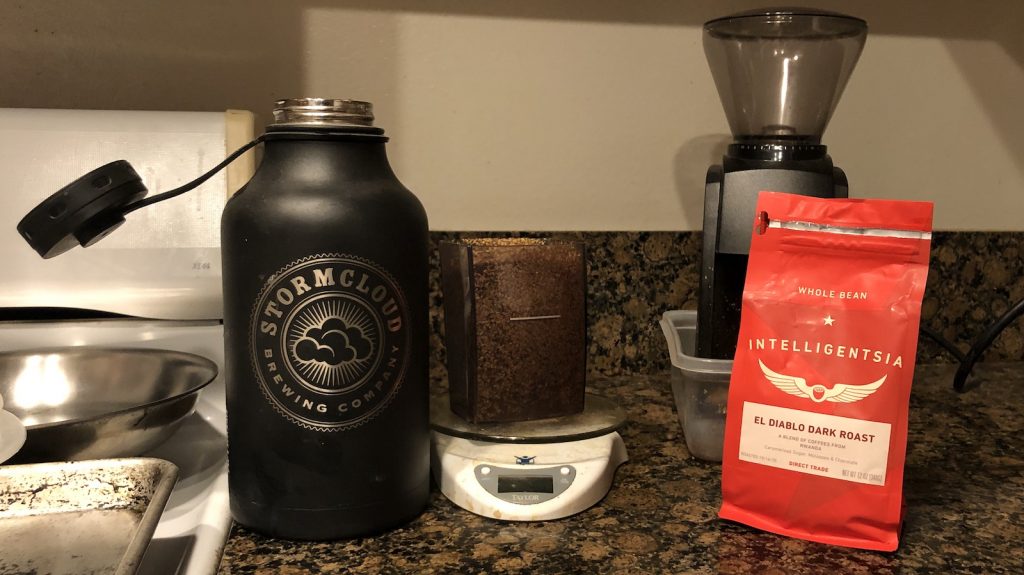
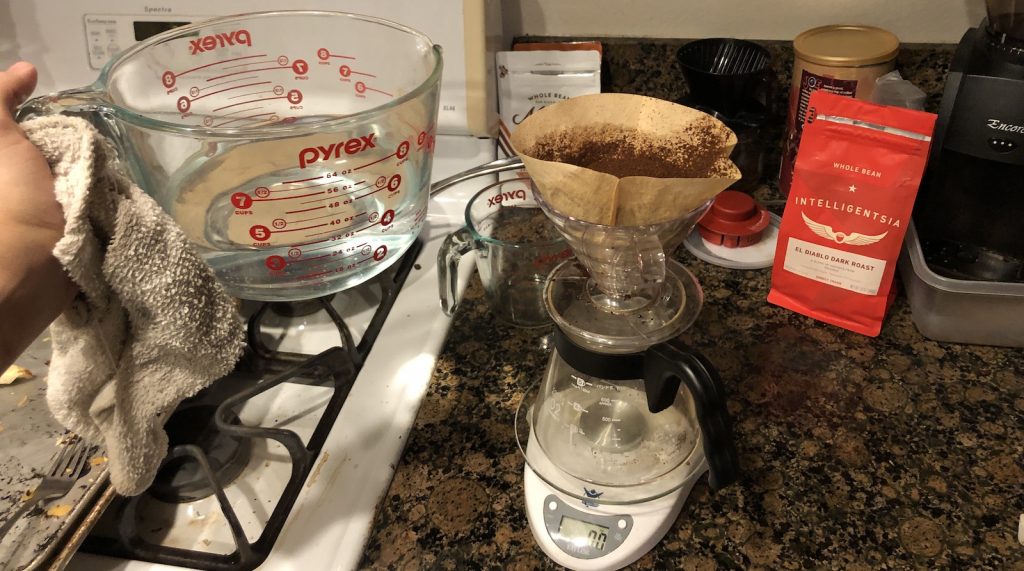












10 thoughts on “exBEERiment | Brewing With Coffee: Revisiting Hot vs. Cold Brew In Stout”
Why not try adding roasted coffee beans instead of (or in addition to) the roasted barley grains in the mash?
Have you tried boiling coffee for a full hour?
Perfect timing with this article! I just mashed in on a planned Coffee Oatmeal stout, and Ive been debating whether to hot or cold brew the coffee addition. It looks like either way works, so I will most likely go with my original plan of cold brewing. Thanks again!
I prefer to throw whole beans in the fermenter
Whole beans in the fermentor for 3 days prior to bottling or kegging is the simplest way to go. Longer can leave a green coffee bean taste. Yuk. You can coffee any style. In a stout or porter 80-100 g/23 litres has worked well for me, but less in lighter beers like amber ale. Make sure you use a fresh, new bag of beans to reduce contamination risk. Also, avoid the temptation to use dark roast. A light-medium roast espresso works great.
Great article. With your preferred method of adding coffee beans whole, is the amount the same per 5 gallons as it was here? Do you sanitize with vodka or anything first, or just throw them in? Thanks!
I consider a better idea to mix the use of coldbrew coffee and the use of whole beans (crushed and soaked same as a dry hop). In my experience, it combines the nice fruity flavours of the coldbrew coffee with some roasty bitterness from the beans. If course, it also depends on the style as lighter beers might benefit from the coldbrew only.
Shocked at your mineral profile. With a stout, I highly recommend increasing the chloride to make the grain pop! 3 to 1 chloride to sulfate works well.
I’d like to see the long term effect on the beers as both hot and cold brew eventually give me green pepper in my beers when aged. Does the dry beaning do the same?
Your choice of beans, grinder I see in the background and use of pour over give me confidence. I’d do what you do.